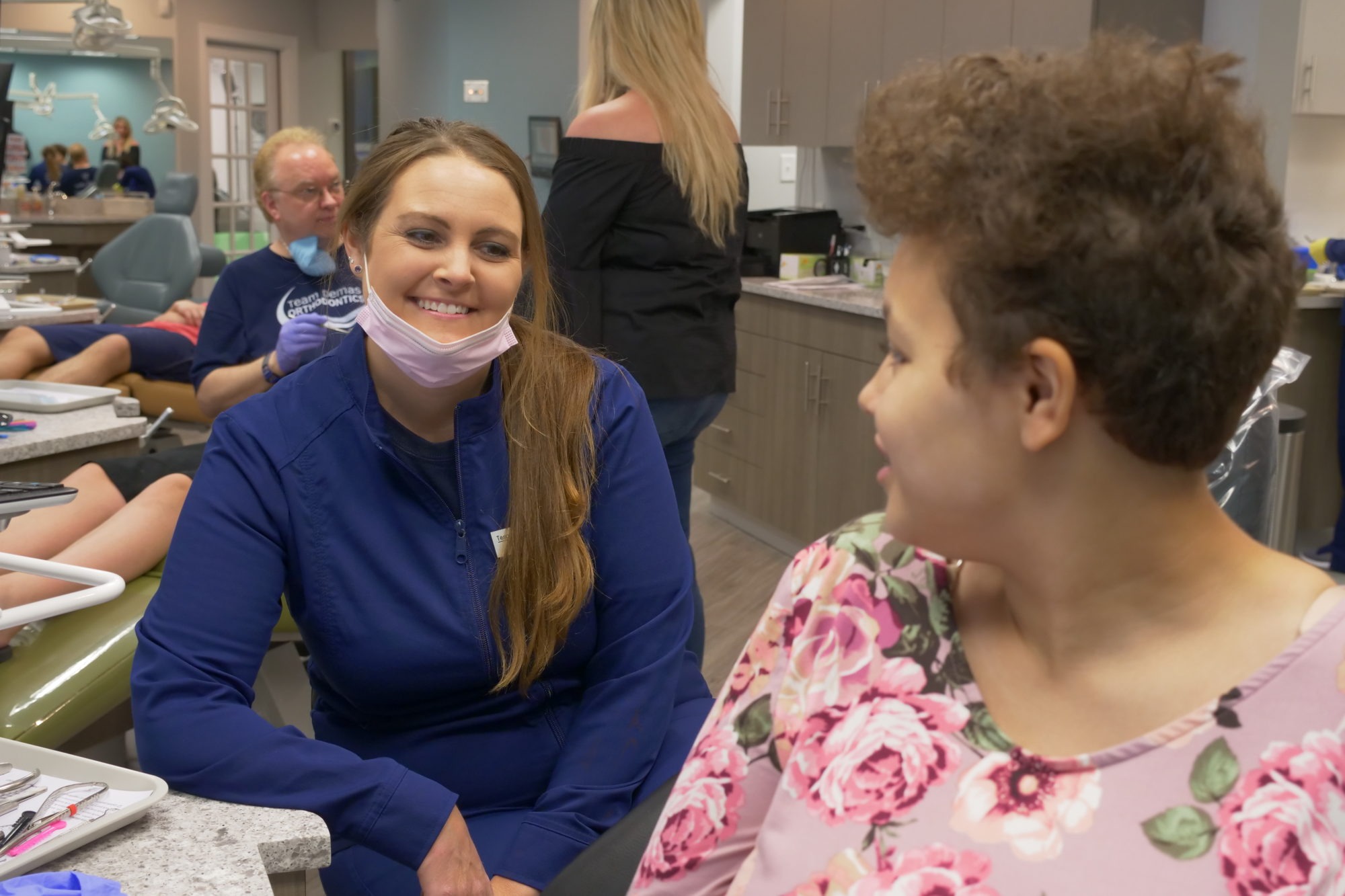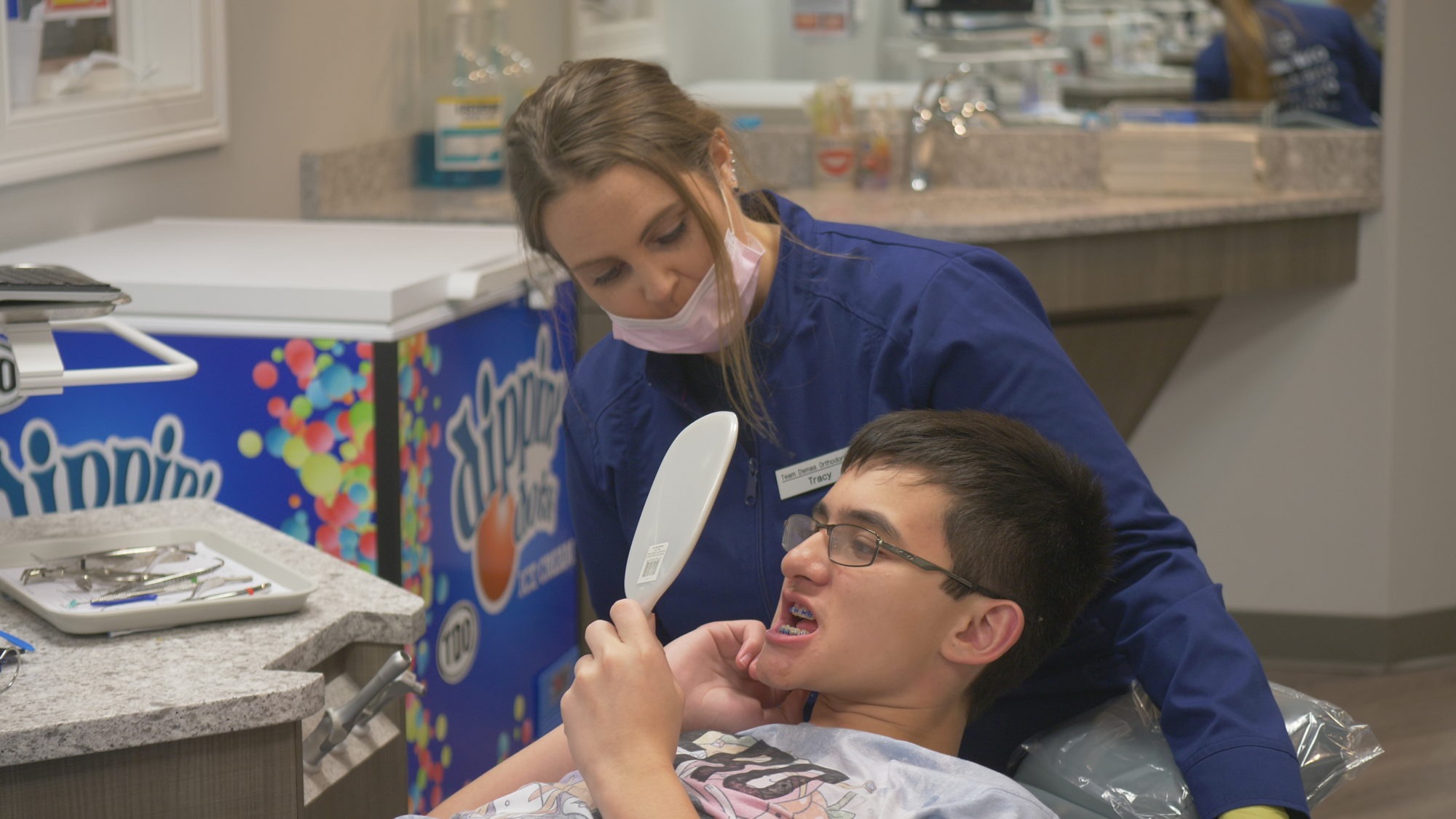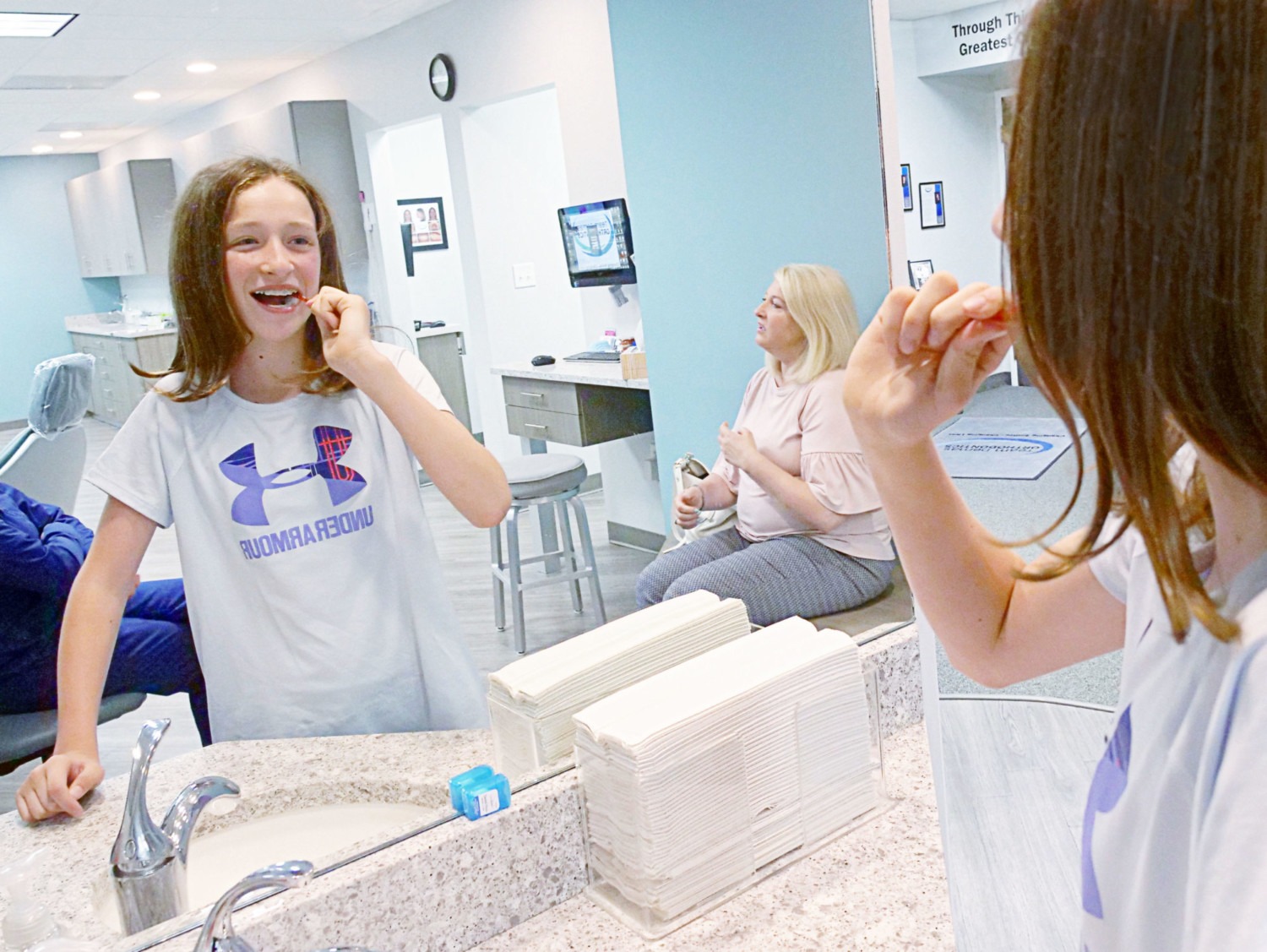Caring for Braces
Here to Help You
Dr. Demas has a deep-rooted passion for making beautiful smiles. Educating his patients on proper dental and orthodontic care for their braces is an important part of the process.

Doing Your Part
A successful orthodontic treatment and a healthy and beautiful smile is the result of a team effort between you, Dr. Demas, and your family dentist.
As the patient, you play the key part. It’s up to you to ensure that your treatment plan ends in success. Most importantly, you must keep your teeth clean and maintain good dental hygiene while you’re wearing braces.
Proper dental care will take a little extra time and effort but the results are well worth it and will help you enjoy the best possible smile from your orthodontic treatment.
Plaque is the Enemy
Plaque is a sticky, colorless film that collects on your teeth. It’s composed of bacteria, food, and saliva.
If plaque and trapped food are left on your teeth and around your braces, they can cause swollen gums, bad breath, cavities, and permanent marks on your teeth.
As your Southington orthodontist, we advise brushing your teeth regularly to remove this plaque.
Also, we teach all of our patients the proper methods of flossing while in braces to ensure that all plaque is removed on a regular basis.

When to Clean
- Brush thoroughly after each time you have a meal or snack.
- If you can’t brush right away after a meal, be sure to at least rinse your mouth well with water until you can brush.
- Carry a travel toothbrush so that you can brush when away from home.
- At least once every day, brush your teeth and braces thoroughly until they are spotlessly clean, and then floss.
- This takes a little extra time, so you may want to do it at night before going to bed.
How to Brush
While you’re in braces, you’ll need to relearn the basics of brushing your teeth. This will teach you to pay attention to the cracks and crevices not only between teeth but around brackets and wires.
Keep these tips in mind when brushing your teeth with braces:
- Use a fluoride toothpaste and a soft, rounded-bristle toothbrush that’s in good condition. Because braces wear out a toothbrush quickly, replace your brush as soon as it shows signs of wear.
- Brush around all the parts of your braces and every surface of your teeth — fronts, sides and backs.
- Be sure to brush your tongue and
roof of the mouth. A good way to tell if you’re brushing correctly is if your braces look clean and shiny and you
can see the edges of the brackets clearly. - Brush your gums gently and thoroughly.
- Rinse thoroughly after brushing.
- Inspect your teeth and braces carefully to make sure they are spotless. Look closely in a well-lighted mirror. This is a good time to check for loose or broken brackets. If you find a problem, contact us to see if it needs to be checked out and if time needs to be scheduled to make a repair.

How to Floss
As mentioned above, we’ll guide you with proper flossing techniques.
These tips for flossing with braces will make the process smoother for you, and you’ll be a pro in no time.
- Floss every night before you go to bed. That way, you won’t feel rushed.
- When flossing with braces on, it might be necessary to use what’s called a floss threader. This reusable tool allows you to get dental floss underneath your archwire easily.
- Make sure you clean carefully along and under the gumlines.
- Flossing with braces on may seem like a difficult process, but it’s very important. And as with anything, a little practice will make it go a lot faster.
Other Hygiene Helpers
In addition to the regular dental hygiene tools we are familiar with like toothbrushes and floss, there are a few products we can recommend that make brushing teeth with braces a little easier to manage.
- Interproximal Brush: This tool slips under your archwire to more completely remove plaque and food particles near your brackets.
- Prescription Fluoride Toothpaste or Fluoride Rinse: Use once a day as part of your cleaning routine, if prescribed. For the best results, use with your interproximal brush to deliver maximum fluoride protection to your teeth.
- Power Toothbrush or Waterpik: These devices, such as the Oral-B Professional Series toothbrush, are designed to make brushing easier and more efficient.
